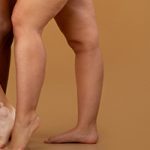Obesity and lipedema are two conditions that involve an increase in fat accumulation in the body. However, it is essential to understand that these They are different conditions, with different causes, symptoms and consequences.

Lipedema: more than a weight problem
Lipedema is a condition chronicle and little understood that mainly affects women. It is characterized by the abnormal accumulation of fat in the extremities, such as legs and arms. Unlike obesity, lipedema It is not related to excess caloric intake or lack of exercise. This condition is due to a genetic and hormonal predisposition, meaning that people who suffer from it often have family members with the same condition.
Common symptoms of lipedema include sensation of heaviness in the affected extremities, sensitivity to touch, easy bruising, and a “orange peel” on the skin. As the condition progresses, it can cause significant problems in the mobility and quality of life of those who suffer from it.
Obesity: a weight problem
On the other hand, the obesity is a condition in which a person accumulate an excess of fat throughout the body due to an imbalance between calorie intake and energy expenditure. Unlike lipedema, obesity is a condition related to lifestyle, diet, and physical activity. Although it also has a genetic component, obesity is usually the result of unhealthy food choices and lack of exercise.
Symptoms of obesity include a general increase in fat body, health problems such as type 2 diabetes, heart disease and high blood pressure, among others. Obesity is a serious condition that requires comprehensive management, often including dietary changes and increased physical activity.
Main differences between lipedema and obesity
Underlying causes
One of the key differences between lipedema and obesity lies in their Causes underlying:
- Lipedema: This is a chronic and poorly understood condition that is believed to have a underlying genetics and hormonal. People who suffer from lipedema often have a family history of the condition. The specific cause is not yet fully understood, but it is not related to caloric intake or lack of exercise.
- Obesity: Obesity, on the other hand, is usually due to a imbalance between calorie intake and energy expenditure. While genetics can also play a role in predisposition to obesity, the main cause is related to unhealthy diet and lack of physical activity.
Fat distribution
The way fat is distributed in the body is another significant difference:
- Lipedema: In lipedema, fat tends to accumulate so disproportionate in the extremities, such as the legs and arms. This results in an uneven appearance and can cause mobility problems and discomfort.
- Obesity: In obesity, fat is distributed more uniform throughout the body. It can accumulate in the abdomen, hips, thighs, and other areas, but not as specifically as in lipedema.
Symptoms and complications
The symptoms and complications associated with lipedema and obesity also differ:
- Lipedema: People with lipedema often experience a feeling of heaviness in the affected extremities, sensitivity to touch, easy bruising and orange peel skin. As it progresses, lipedema can cause issues significant in the quality of life and mobility.
- Obesity: Symptoms of obesity can include breathing difficulties, type 2 diabetes, cardiovascular disease and others health problems related to excess weight. Obesity can have a significant impact on overall health.
The importance of proper diagnosis and treatment
Correctly identifying whether it is lipedema or obesity is essential for the treatment and the management effective of these conditions. Those who suffer from lipedema should seek guidance from a doctor who specializes in disorders lymph nodes or a vascular surgeon to determine treatment options, which may include compression therapy, physical therapy, or, in severe cases, surgery.
On the other hand, people with obesity may benefit from guidance from a health professional, such as a dietician or a personal trainer, to develop an appropriate and sustainable weight loss plan. Treatment of obesity involves changes in diet, physical activity, and, in some cases, medication or surgery.

If you think you may be experiencing the symptoms of lipedema or if you struggle with obesity, it is essential seek help and guidance of health professionals. Each condition requires a unique approach and personalized, and the first step to a healthier and happier life is to seek the right help.
At Lipepedia, we are committed to providing the necessary support to those who fight against these conditions. Our team is ready to offer you the necessary help and guidance. You don't have to face this alone; We are here to help you regain your health and well-being.













